What Is Pichwai?
By Pooja SinghalPichwai art is a detailed and devotional form of textile painting that began in the 17th century in Nathdwara, Rajasthan, India. This temple town became an important centre for the worship of Krishna, an Indian deity, particularly within the Pushtimarg sect of Vaishnavism, a branch of Hinduism. These intricately decorated textiles are traditionally hung behind the idol Shrinathji’, an incarnation of Krishna, in Hindu temples. The name itself is derived from this function – ‘pichh’ meaning ‘back’ and ‘wai’ meaning ‘hanging’ in Sanskrit. These hand painted textiles depict daily and seasonal rituals from Krishna’s life, characterised by intricate detailing, featuring sacred Nandi cows, lotuses and milkmaids. To safeguard and revitalise this centuries-old tradition, I founded my atelier Pichvai Tradition & Beyond, an initiative dedicated to preserving the art form’s cultural heritage while establishing its relevance in contemporary artistic discourse. This summer, Pichvai Tradition & Beyond will present the first major London exhibition of the art form, Feast, Melody and Adornment (राग भोग श्रृंगार) (2 – 6 July 2025) providing an opportunity for viewers to explore the historical significance of the 400-year-old art form and its artistic evolution.
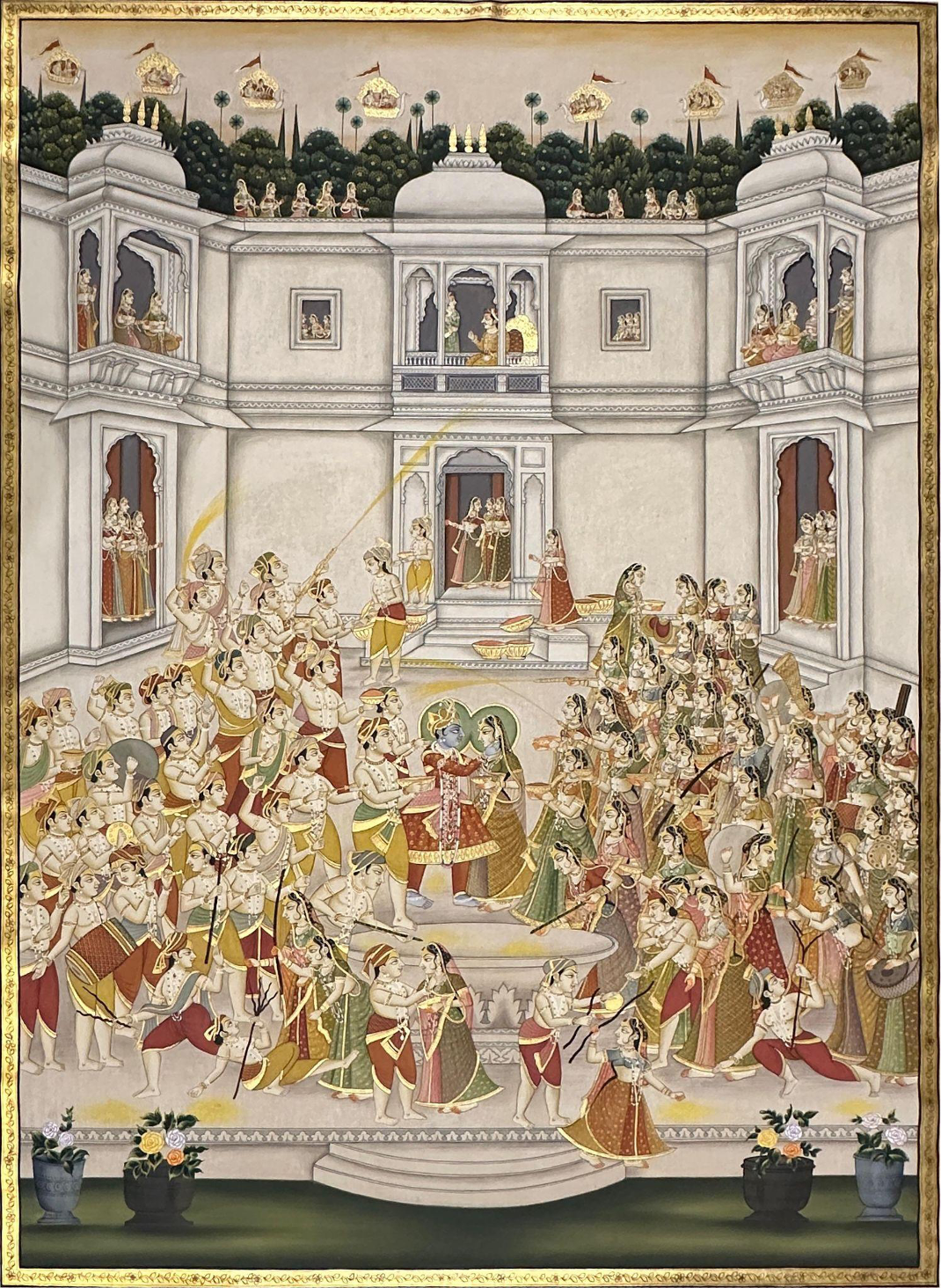
Historically, large Pichwais adorned temple sanctuaries as part of the seasonal decorations celebrating Shrinthaji, while smaller works were sold to pilgrims as sacred mementos. These pieces allowed worshippers to carry a piece of their spiritual experience home with them, and found a place in their personal shrines. Though originally created for ritual use, this art form has extended beyond temple walls, gaining appreciation in homes, royal courts, and museums alike.
What makes these works particularly fascinating to me is their communal genesis. Originally created as expressions of collective devotion, early Pichwais were crafted by anonymous artisans who had only brief, ritual glimpses of Shrinathji. This sacred practice blossomed into a thriving artistic community, with nearly 300 artists working across generations in Nathdwara’s aptly named Chitrakaron Ki Galli – the Lane of Painters. Here, a distinctive style emerged, defined by religious precision and decorative elegance.
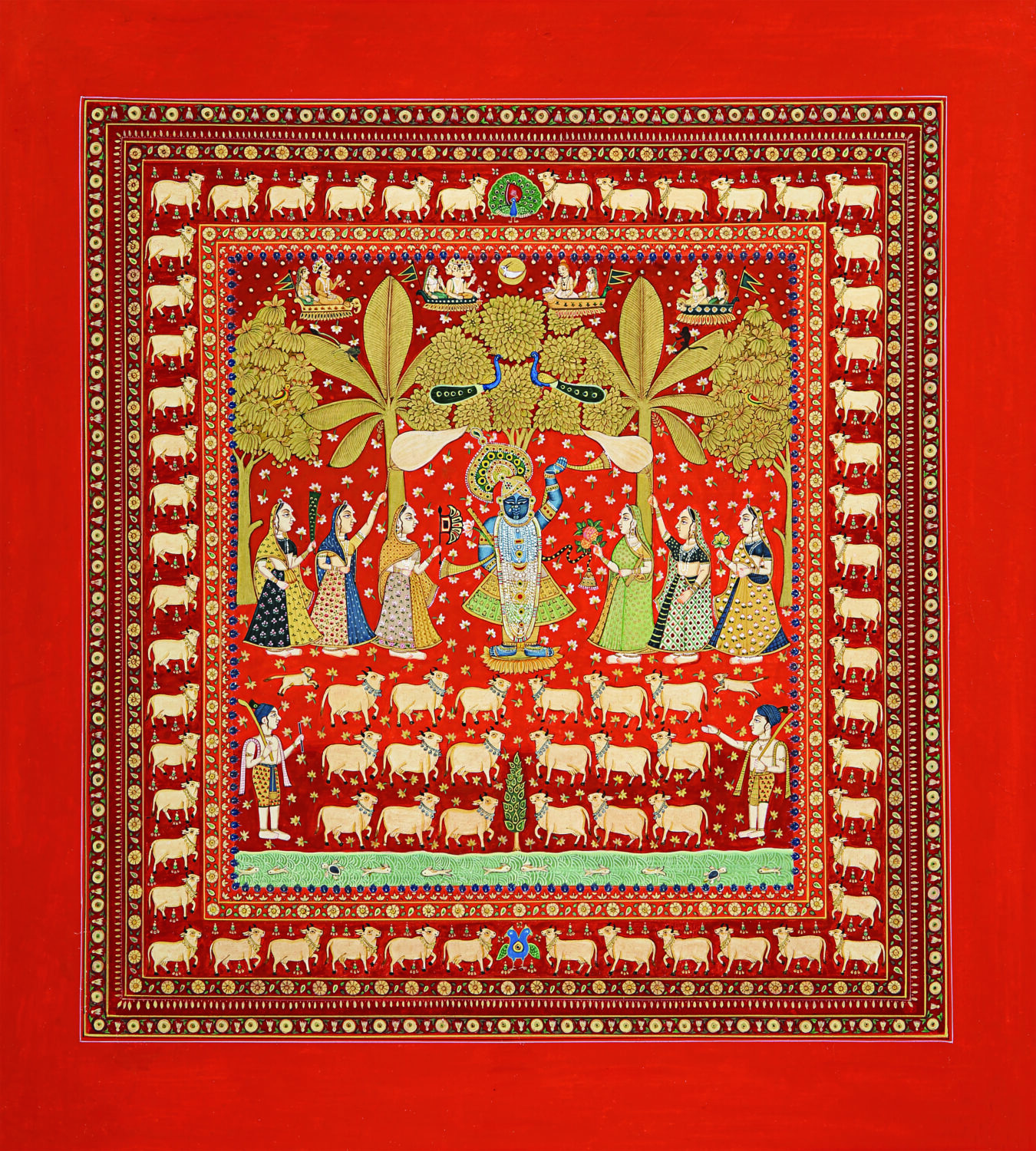
The creation of a Pichwai is a meticulous process steeped in tradition. The foundation begins with a cotton-silk blend fabric from Rajasthan, which is carefully prepared with khadia – a chalk paste mixed with natural glue – creating the smooth surface essential for detailed painting. These works are particularly distinguished by their striking palette, using mineral pigments extracted from precious stones like emeralds, rubies, and lapis lazuli to achieve their characteristic vibrant colours. Historically, in a specialised task traditionally performed by women of the household, the brilliant yellows were once derived from cow urine after feeding the animals a mango-rich summer diet.
The artistic execution unfolds in precise stages. First, the design is delicately sketched using fine squirrel-hair brushes, followed by careful application of the mineral colours in layers. For elements requiring special emphasis, artisans apply gold and silver foil. The culminating step, known as likhai, involves outlining the intricate details, bringing depth and definition to the composition.
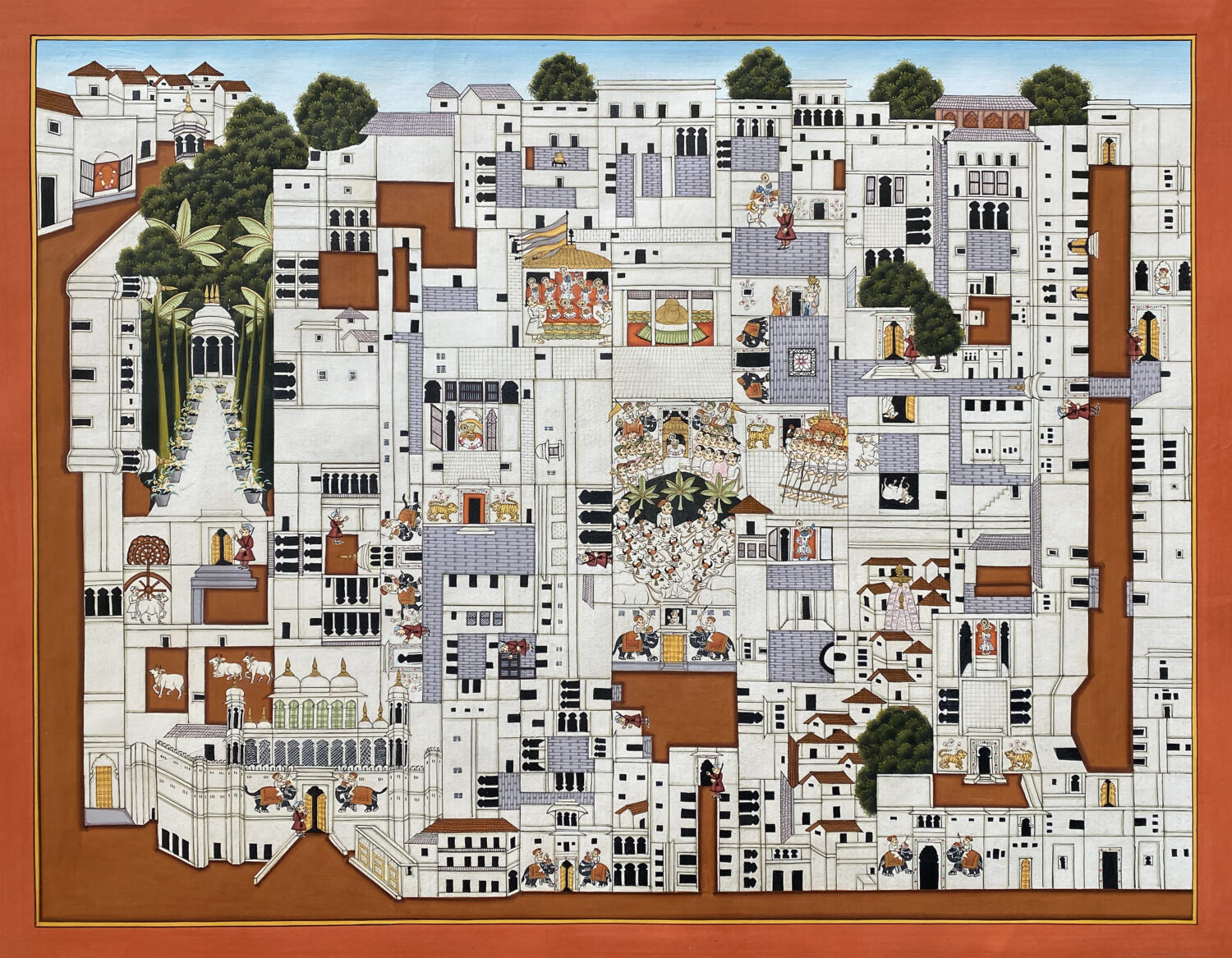
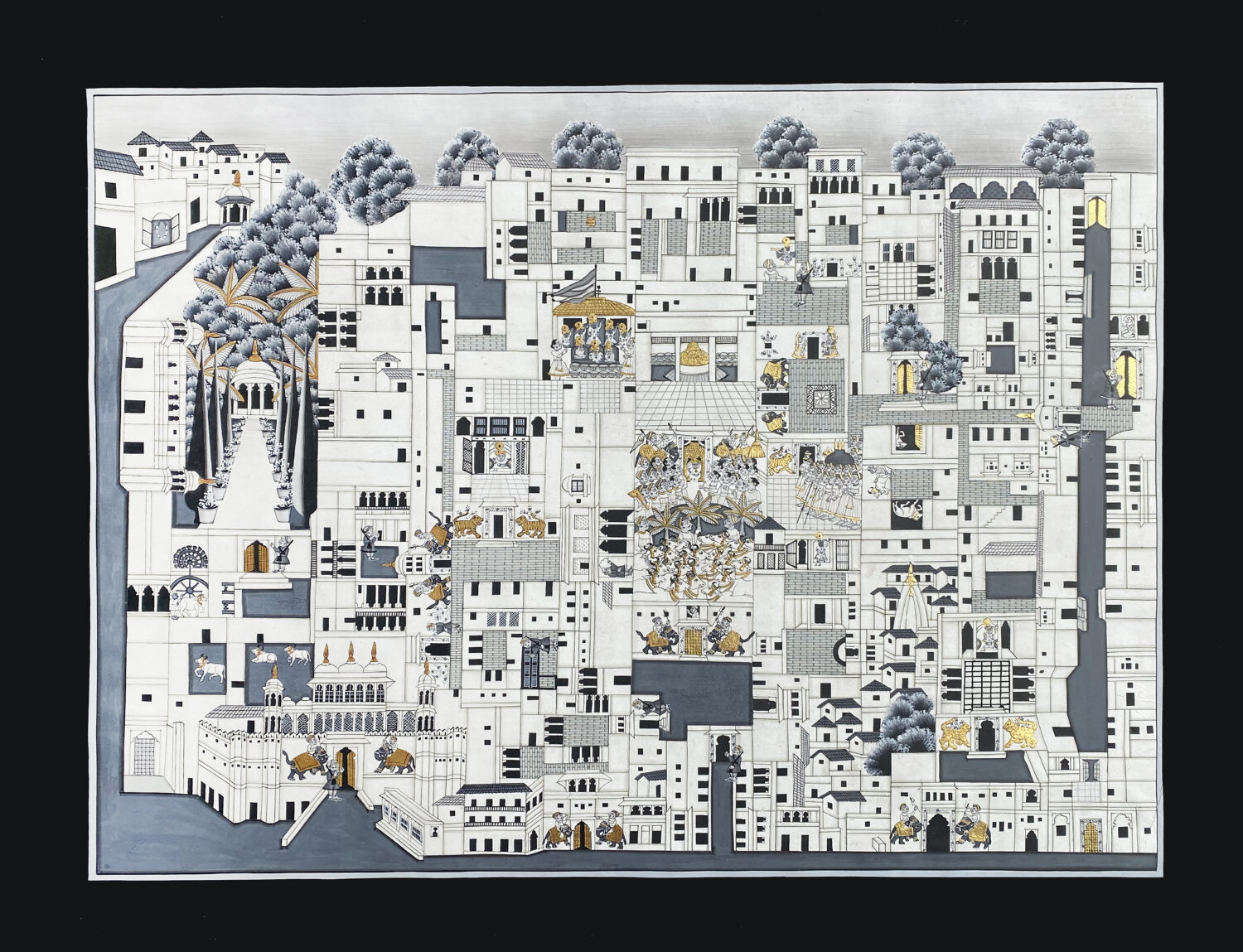
The journey of Pichwai from temple walls to wider appreciation wasn’t without its challenges. As its popularity grew, so did mass production, raising concerns about the art form’s prestige and its authenticity. Traditional methods began yielding to commercial reproduction techniques and synthetic materials. The meticulous hand-painted originals gave way to cheaper versions for pilgrims, while the master-disciple system – the backbone of knowledge transmission – began to falter. Young artists, formerly trained through years of apprenticeship, left for urban opportunities, threatening the generational continuity of Nathdwara’s artistic families.
In response to these challenges, I founded my atelier Pichvai Tradition & Beyond, aiming to provide a response which foregrounded authentic traditional methods and rigorous historical research. In a reimagination of the traditional master – apprentice system, the atelier is based on a collaborative production system across generations to encourage innovation.
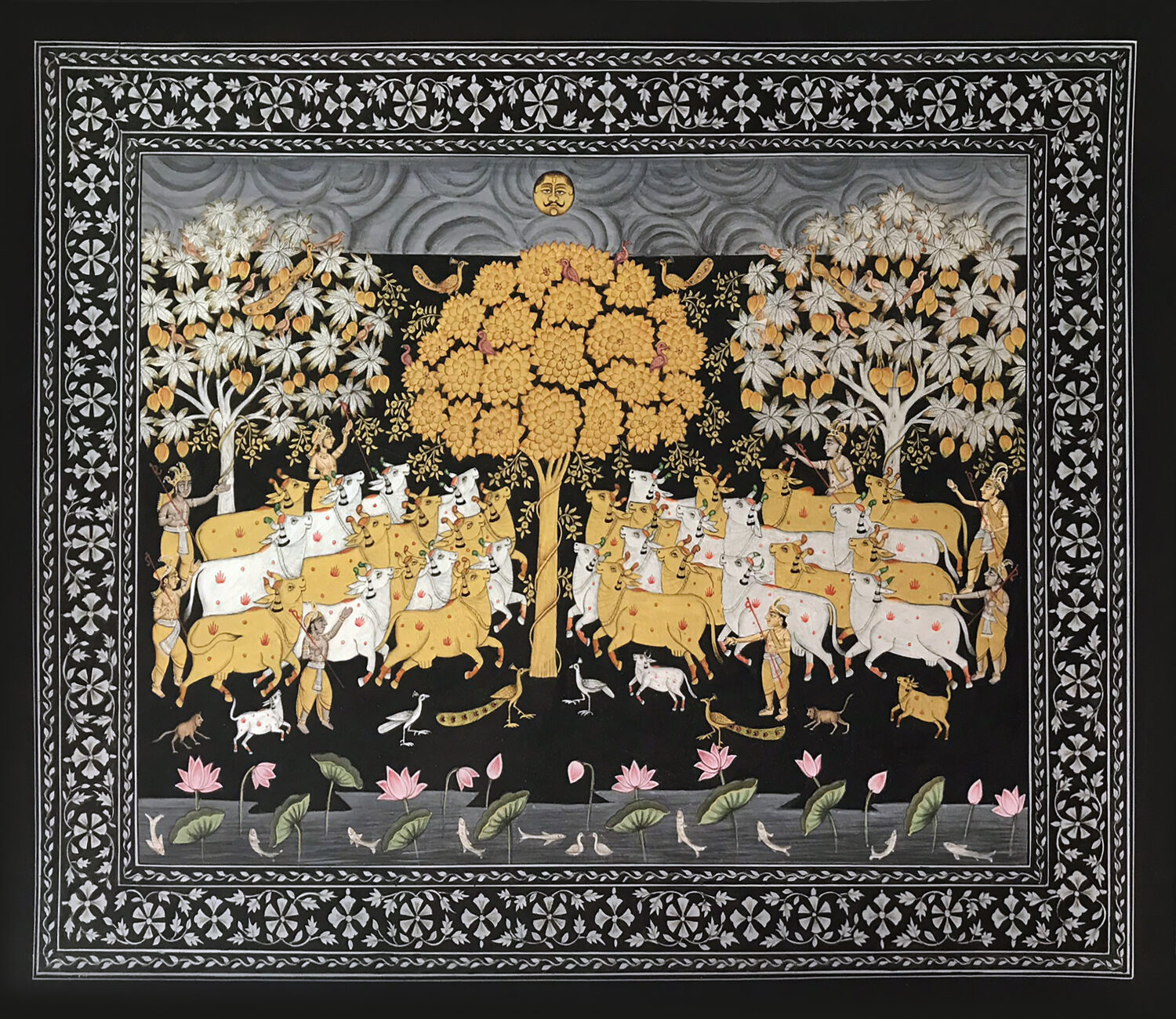
Artists at the atelier have breathed new life into the form by drawing on a rich, blended heritage, incorporating the lyrical elegance of Kishangarh, Mughal-influenced Jaipur realism, and Kota’s rustic charm. They’ve resurrected historical techniques like gold and silver foiling inspired by Deccan traditions, while embracing the restrained compositions and softer palettes characteristic of 19th-century Kota works.
Modern interpretations showcase remarkable diversity. The Pichwais created at our atelier demonstrate extraordinary adaptability in scale, materials, and style, connecting artisanal roots with contemporary visual culture. Works range from miniatures to large-format pieces, appearing on both textile and paper. A trend toward miniaturisation, especially on layered handmade basli paper, allows artists at the atelier to preserve intricate devotional details while accommodating modern spaces and tastes.
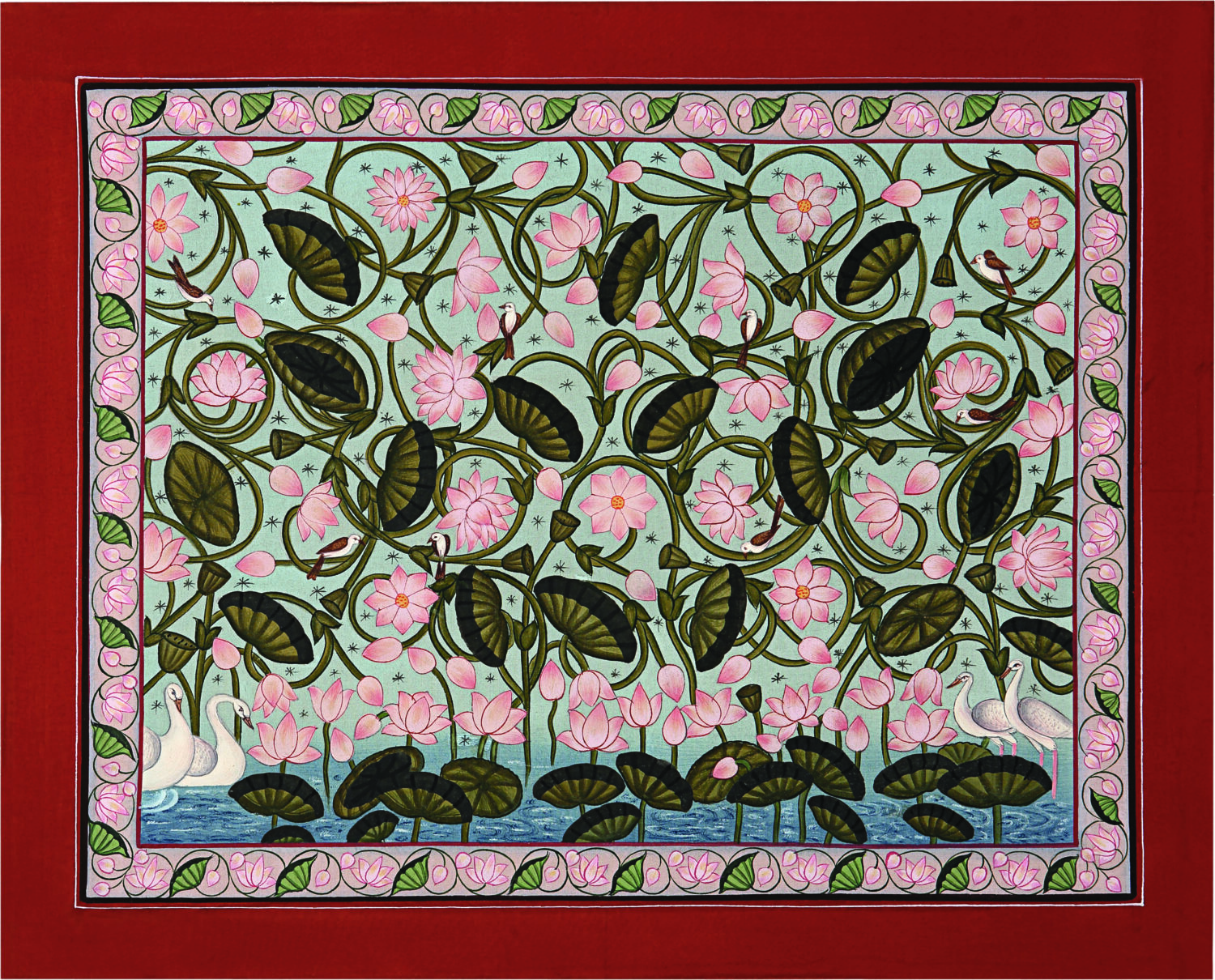
Feast, Melody, and Adornment, an exhibition featuring both traditional and contemporary Pichwai interpretations, will show at Mall Galleries, London, from 2 – 6 July 2025. This showcase will reveal how sacred practices can find new resonance in contemporary spaces while honouring their spiritual roots, with over 400 hand painted works from the past 100 years on show. What emerges from this artistic evolution is not just the preservation of tradition, but its vibrant reinvention.
Feature image: Kamal Vana. Courtesy Pichvai Tradition & Beyond